

Byggekologi - Ekologiskt & hållbart byggande. Recycled Building Materials. Fast Construction Housing. Economic Technologies. Painting. Inspirations. Air Conditioning. Pyramid. Friendly and Sustainable Houses. Forest Cabins. Education. Building Projects. Eco Homes from the Earth: 7 Ways to DIY - WebEcoist.
Cabins. Cork houses. Natural Building. 815 Best Ecological Construction images in 2019. THE FUTURE OF ARCHITECTURE. 10 FUTURISTIC HOMES - TRANSFORMING HOUSES AND DESIGN. See How Termites Inspired a Building That Can Cool Itself. Bio Building. A natural history writer, Benyus has published multiple books about the ways in which plants and animals adapt to their habitats.
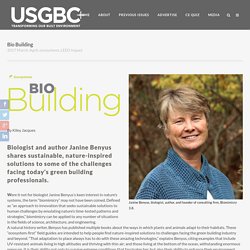
These “ecosystem-first” field guides are intended to help people find nature-inspired solutions to challenges facing the green building industry and beyond. Inhabitat - Green Design, Innovation, Architecture, Green Building. Concrete is a material that quite literally holds our cities together.
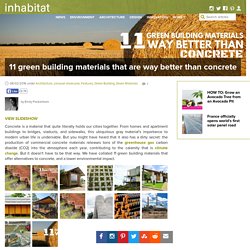
From homes and apartment buildings to bridges, viaducts, and sidewalks, this ubiquitous gray material's importance to modern urban life is undeniable. But you might have heard that it also has a dirty secret: the production of commercial concrete materials releases tons of the greenhouse gas carbon dioxide (CO2) into the atmosphere each year, contributing to the calamity that is climate change. But it doesn't have to be that way. We have collated 11 green building materials that offer alternatives to concrete, and a lower environmental impact.
Rather than relying on new research and technology, straw bale building hearkens back to the days when homes were built from natural, locally-occurring materials. Would You Live On A Cliffside To Save Space On Our Planet? The “Casa Brutale” is the architectural concept of building a living space directly into a cliff side.
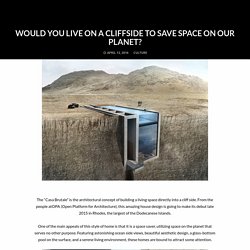
From the people atOPA (Open Platform for Architecture), this amazing house design is going to make its debut late 2015 in Rhodes, the largest of the Dodecanese Islands. One of the main appeals of this style of home is that it is a space saver, utilizing space on the planet that serves no other purpose. Featuring astonishing ocean side views, beautiful aesthetic design, a glass-bottom pool on the surface, and a serene living environment, these homes are bound to attract some attention. Low-impact building. ‘The individual’s desire to build something should not be deterred!
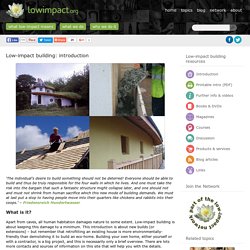
Everyone should be able to build and thus be truly responsible for the four walls in which he lives. Zedfactory. ZED Factory began as Bill Dunster Architects in 1998.
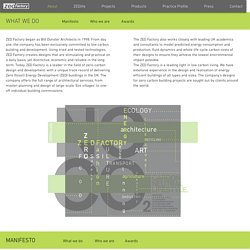
Metabolic Materials as a Measure of Architectural Quality. By Rachel Armstrong Between the 1830’s to 1840’s, the modern public health movement was started in Britain when Edwin Chadwick, advocate for the Poor Law, brought his vision of public health through sanitarianism into being through public works.
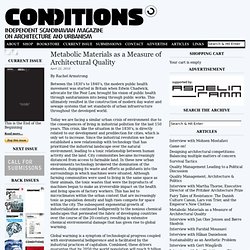
This ultimately resulted in the construction of modern day water and sewage systems that set standards of urban infrastructure throughout the developed world. Today we are facing a similar urban crisis of environment due to the consequences of living in industrial pollution for the last 150 years. What can rule-bending alternative builders teach us about smarter shelters? (Video) Modern building codes and zoning regulations, while helping to set safety standards that can save lives, can also serve as big barriers to building small, sensible, and affordable dwellings with alternative materials and techniques.

FIRST EARTH (1/12) - Uncompromising Ecological Architecture. Low-impact development (UK) Low impact development (LID) has been defined as "development which through its low negative environmental impact either enhances or does not significantly diminish environmental quality".[1][2][3] The interplay between would-be developers and the UK planning authorities since the 1980s has led to a diversity of unique, locally adapted developments, often making use of natural, local and reclaimed materials in delivering highly affordable, low or zero carbon housing.
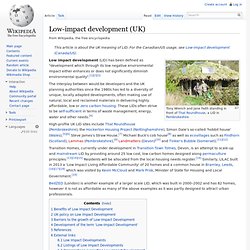
These LIDs often strive to be self-sufficient in terms of waste management, energy, water and other needs.[4] BedZED (London) is another example of a larger scale LID, which was built in 2000–2002 and has 82 homes, however it is not as affordable as many of the above examples as it was partly designed to attract urban professionals. Substantial research has concluded that LID represents some of the most innovative and sustainable development in the UK.[20][21][22] GREEN BUILDING 101: The Conclusion. As summer comes to a close, so does our weekly series on green building.
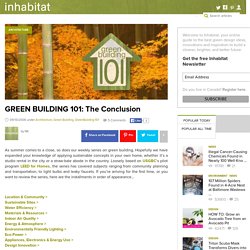
Hopefully we have expanded your knowledge of applying sustainable concepts in your own home, whether it’s a studio rental in the city or a straw-bale abode in the country. Loosely based on USGBC‘s pilot program LEED for Homes, the series has covered subjects ranging from community planning and transportation, to light bulbs and leaky faucets. Home Extensions: House Addition Ideas - Busyboo - Page 1. Vintage Interior Design. Inspiring and Innovative Response to Urban Rooftop. Mandela Park, by Karres en Brands Landscape, Almere, The Netherlands.

Almere in The Netherlands is the perfect example of a low-density city constructed from zero. Architects had a great opportunity here to demonstrate to the world how innovative and contemporary design works. Mandela Park, which opened in 2011, was designed by Karres en Brands Landscape and planned by OMA as part of the master plan for the next stage in the development of Almere. This plan focuses on the location of future business areas. Mandela Park Overview. Designing the Urban Rooftop As you can imagine, creating a new business center means ensuring easy availability and providing for new parking needs in the area. INFOGRAPHIC: Meet the Ultra-Efficient Homes of the Future. Resources are dwindling, prices are rising, and energy efficiency has never been more important. Commercial buildings have long been designed with conservation in mind: Taiwan’s national stadium is covered almost entirely with solar panels, and the CaixaForum Museum in Madrid boasts a living wall of 15,000 plants.
However, with the world’s population predicted to exceed 8 billion by 2050, architects are turning their green design skills to residential homes. Potential structures range from ancient mudbrick domes, to space-age Earthships. Some designs are more viable than others, but the Big Deal team have identified five of the most promising candidates. For a glimpse of the future, check out their infographic below.
Bambu. Books & Info. Building Methods & Information. Cave Dwellings. Cob. Co-housing. Container Architecture. Cordwood.
Dome. Earthbag Building. Ecological House. Eartships.
Floating Homes. Futuristic. Green Areas. Greenhouse. Greenhous Living. Green Roofs. Hempcrete. Ideas/Inspirations. Interior Design. Into the Wild. Log Cabin.
Mixed Techniques/ new materials. Old techniques. Pallet Buildings. Plans and Blue Prints. Plastic Bottles. Portable. Prefabricated. Printed. Products. Rammed Earth.
Research. Resources. Salvaged Wood. Shelters. Sites & Blogs. Straw bale. Straw Light Clay. Subterranean & Earth Sheltered. Sustainable Products & Materials. Symbiotic Design. Tree Houses. Tiny Houses.
Ecovillage Projects. Whole Tree Architecture. Workshops/ internships. Alt Homes. Video Library - Green Building. Architecture + Housing. HABITATS éco-logiques. The ABC of Architects [VIDEO] Architecture for Humanity.
Yestermorrow Design Build School offers a variety of courses in sustainable design : Design Build School Vermont.